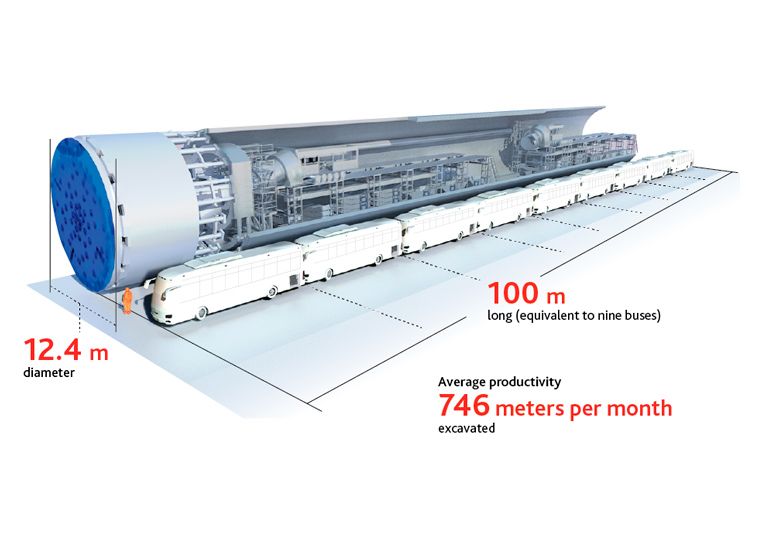-
ACCIONA built an underground bypass in Brisbane that has given every user an extra 4.5 free days a year. Find out how
-
-
Have you ever thought what you would do if you had an extra four-and-a-half free days a year? It could be the ideal length of time for that romantic weekend away you’ve been planning for months. 112 hours that could be enough to finish off the old motor you are restoring. Or 6,720 minutes doing nothing at all but enjoying a long walk, lying on the sofa or simply spending time with your loved ones.
It was with this in mind that over 20,000 people took part in a walk-through, on 31 May 2015, of the 4.6km Legacy Way tunnel in the Australian city of Brisbane. Each participant emerged at the surface with a remittance stub to the value of four-and-a-half extra free days per year. They had just walked through, on the day of its inauguration, a time tunnel – now used by 20,000 drivers a day and which has turned the Queensland capital into a more sustainable, cleaner and quieter city.
-
Have you ever thought what you would do if you had an extra four-and-a-half free days a year?
-
-
ACCIONA led the Transcity consortium that built the tunnel, alongside Australia’s BMD Constructions and Italy’s Ghella. Together, they overcame several previously unimaginable challenges to complete the underground infrastructure and hand it over to Brisbane’s residents. So, what went into this colossal task?
The design was no simple matter. Brisbane is a vibrant capital of eastern Australia, which has seen population grow by one million people in the past 15 years alone – from 3.5 to 4.5 million. To reduce congestion, the local government concluded in 2008 that the best option, considering the future growth of the city, would be to bury part of the traffic. Thus a 4.6km tunnel was conceived to join the Western Freeway and Inner City Bypass roads west of the city center.
-
-
Maximum result with minimum impact
In April 2011, ACCIONA began the work that, during the next four years, would give a new meaning to quality of life in Brisbane… with a minimum impact on the local environment. The Botanic Gardens, Toowong cemetery – a listed artistic heritage site – parks, neighborhoods, leisure areas and Brisbane Grammar School were just some of the important facilities to benefit from landscaping during the project.
To ensure the best possible coexistence with the environment during the four-year construction period, a series of additional measures were taken. First, an acoustic shed was built to reduce the noise generated during the excavation works. Then a 500m-long conveyor belt was installed to evacuate the spill from the drilling, avoiding the need for over 180,000 lorry journeys to transport the rubble to a nearby quarry.
This avoided the emission of over 1,000 metric tons of carbon dioxide to the atmosphere. Noise pollution, as well as the impact of dust on local vegetation, was thus drastically reduced. The solution won the project the Lord Mayor’s Innovation Award in 2012.
-

-
Joyce and Annabell: toe to toe underground
Two giants were meanwhile hard at work below the surface. With diameters of 12.4 meters – the height of a four-story building – and lengths of 100 meters – equivalent to nine buses lined up one after the other – and each weighing 2,800 metric tons – 23 blue whales – the tunnel boring machines, Joyce and Annabell, drilled through the earth in both directions at an average rate of 746 meters per month, setting a one-day record in the process of 49.7 meters.
Working underground to the benefit of those above
The benefits for the population were immediate. As soon as the tunnel opened to traffic on 25 June 2015, the congestion above ground was immediately relieved on a large scale. Savings are in the order of 14 minutes per journey and a new green and peaceful new district has emerged in the city. Brisbane’s residents are also already enjoying their four-and-a-half days extra free time per year. The result is a sustainable environment in which to face the challenges of a future full of promise.
Visit the ACCIONA website to get to know more projects like the Legacy Way.





